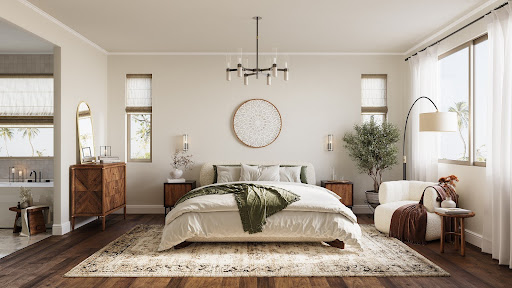Designing Beyond Blueprints: How 3D Interior Rendering Services Empower Business Decisions

In an age where decisions are driven by data, visuals are becoming equally powerful. For developers, retailers, real estate professionals, and even startups, the ability to present a space before it’s built has become a business necessity. That’s where 3d interior rendering services come into play—not just as design tools, but as strategic assets.
Forget mood boards and 2D sketches. Today, immersive 3D visuals help companies pitch to investors, align internal teams, and validate spatial decisions faster. From office build-outs to retail concept stores, interactive interior renders allow stakeholders to “walk through” ideas before committing capital or construction crews. That level of clarity is no longer a luxury—it’s an expectation.
From Visualization to Validation
Imagine presenting a co-working concept to investors. Instead of static plans, you show them a photorealistic 3D walkthrough: lighting scenarios, material finishes, even human presence simulated into the space. It communicates not just what the space will look like, but how it will feel.
That emotional connection drives faster buy-in—and stronger confidence. Especially for remote teams, a 3D-rendered interior helps everyone see the same version of the future, which reduces friction and accelerates decisions.
This is where interior 3d rendering services act not only as aesthetic enhancers, but as operational enablers. They allow cross-functional teams—from marketing to operations—to align early and reduce the risk of costly misalignment down the line.
Testing Environments Before They Exist
In product development, prototyping is key. The same applies to commercial interiors. Whether it’s a new restaurant layout, a tech lab, or a pop-up retail installation, design choices affect customer experience, employee flow, and brand impression.
With high-quality 3D interior visuals, teams can test lighting, colors, furniture placement, and even signage positioning before committing to fabrication. What once took weeks of physical prototyping now happens digitally—in hours. This improves speed to market and reduces waste.
Scaling Ideas Globally
3D rendering scales with your ambitions. Planning a single boutique hotel lobby? Done. Coordinating 50 retail locations across different cities? Also doable.
Because visualization is digital-first, location and timezone become irrelevant. Designers, contractors, and stakeholders can collaborate on a unified vision from anywhere in the world—something especially important for fast-scaling companies or international franchises.
In this way, 3d interior rendering services function as both blueprint and pitch deck: communicating intent, testing outcomes, and helping brands stay agile in an unpredictable market.
The Future of Interior Decision-Making
As virtual tools continue to evolve, they’re reshaping how we plan space—not just as environments, but as business strategies. Offices, showrooms, healthcare centers, and even metaverse experiences are now being prototyped in digital form before budgets are signed or buildings touched.
In this context, 3D visualization is not a step in the process—it is the process.
The question is no longer “what will it look like?” but “how soon can we show it?” The answer, increasingly, is: right now.

Source: Designing Beyond Blueprints: How 3D Interior Rendering Services Empower Business Decisions



